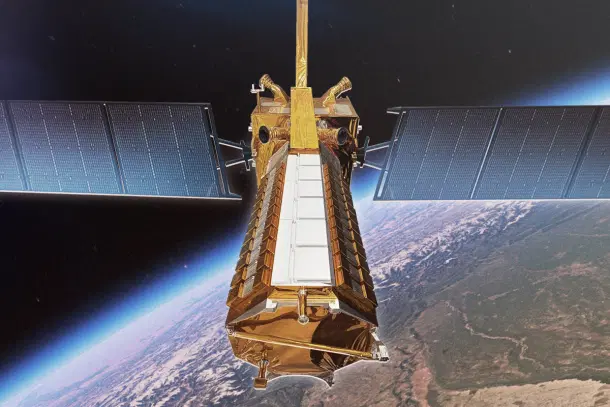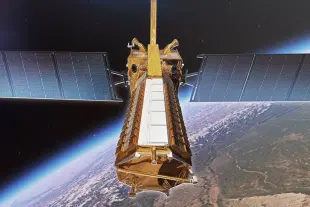News Brief
India Successfully Launches NASA-ISRO NISAR Earth Observation Satellite Aboard GSLV-F16
Arun Dhital
Jul 30, 2025, 05:59 PM | Updated 06:03 PM IST
Save & read from anywhere!
Bookmark stories for easy access on any device or the Swarajya app.


In a major boost to global Earth observation efforts, India on Wednesday (30 July) successfully launched the NASA-ISRO Synthetic Aperture Radar (NISAR) satellite aboard the GSLV-F16 rocket from the Satish Dhawan Space Centre in Sriharikota.
The advanced satellite was placed into orbit by ISRO's GSLV rocket around 19 minutes after the launch.
Jointly developed by ISRO and NASA, the 2,392 kg satellite is equipped with dual-frequency radar systems, NASA’s L-band and ISRO’s S-band, that will provide high-resolution, all-weather, day-and-night imagery of Earth, the Times of India reported.
The mission is designed to capture real-time data on natural disasters, climate shifts, and land surface changes across the globe.
NISAR marks the first Earth observation satellite built under a partnership between India and the United States.
The project reflects over a decade of scientific cooperation, combining NASA’s expertise in deep-penetration radar imaging with ISRO’s capabilities in surface monitoring.
Also Read: Indian Railways Commissions Over 96 Per Cent Of Eastern And Western Dedicated Freight Corridors
The satellite’s wide swath of 242 km and advanced SweepSAR technology allow it to detect surface deformations as small as one centimetre. This makes it a critical tool for:
Disaster response, including earthquakes, landslides, floods, and volcanic eruptions.
Climate monitoring, such as tracking glacial melt, sea-level rise, and permafrost changes.
Agricultural planning, by observing soil moisture, crop growth, and irrigation.
Urban and infrastructure management, through measurement of land subsidence and structural shifts.
Forest conservation, using its ability to image through dense vegetation to track deforestation and habitat changes.
Importantly, NISAR’s data will be freely accessible, typically within one to two days of capture, with near real-time delivery during emergencies.
This open-data policy aims to support global disaster preparedness and sustainable development, especially in countries with limited access to such technology.
The launch also marks a technical milestone for ISRO, as it is the first time a GSLV rocket has placed a satellite into a sun-synchronous polar orbit, enhancing India’s future capability for Earth observation missions.
Also Read: India Set To Launch World’s Most Expensive Earth Observation Satellite 'NISAR' Today—All About It





